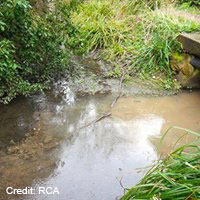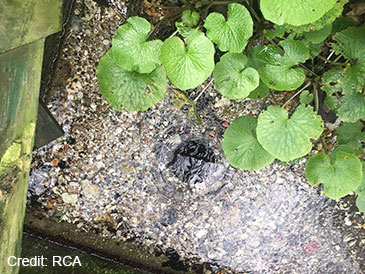Turbidity
What is turbidity?
Turbidity is a measure of the cloudiness of water, quantified by measuring the amount of light that is scattered by a river water sample when light is shined through it. Turbidity is, therefore, an indication of the amount of particulate material that is being carried by the water (such as clays, silts and algae). Turbidity is measured in ‘Nephelometric Turbidity Units (NTUs)’.

Why do we measure turbidity in rivers?
The water in chalks streams is usually very clear and transparent, because chalks streams receive their water predominantly from the ground, and the water is filtered as it moves through the chalk. However, if the water does become cloudy due to transport of sediment there are several problems that can occur. Chalk streams are valued for their aquatic plants, and these plants growing in the rivers need good light conditions. Cloudy water stops light passing through the water to the plants and affects their growth. Chalk rivers are also home to many fish, such as trout, and these fish lay their eggs in the riverbed. Sediment that is transported in the water can settle on to the riverbed and smother these eggs preventing them from developing and hatching out into small fish.
What are the natural controls on turbidity in rivers?
The geology and soils in a river catchment is a key control on turbidity. If a river has its source in an area of clay soil, which is easily transported by water, then river water is likely to be cloudy. Chalk streams are fed by groundwater from chalk aquifers. This groundwater has been naturally filtered by the chalk and contains very little sediment and particles. Consequently it is very clear.

How can human activity change turbidity?
Elevated turbidity or cloudiness can be caused by sediment entering the river from urban and/or agricultural activities. In urban areas, cloudiness is often associated with intense rainfall when solid material that has collected on hard surfaces can be washed into the river, or where mis-connections with sewers and drainage occur. Unfortunately, sediment can also transport pollutants, such as metals, which are attached to the particles. These pollutants can also affect the health of the river. In agricultural areas, cloudy water can be associated with loss of soil especially from land with little or no vegetation cover, and often on hillslopes close to the river. Farm animals that trample the river banks can also cause soil to enter the river, and cause cloudy water.